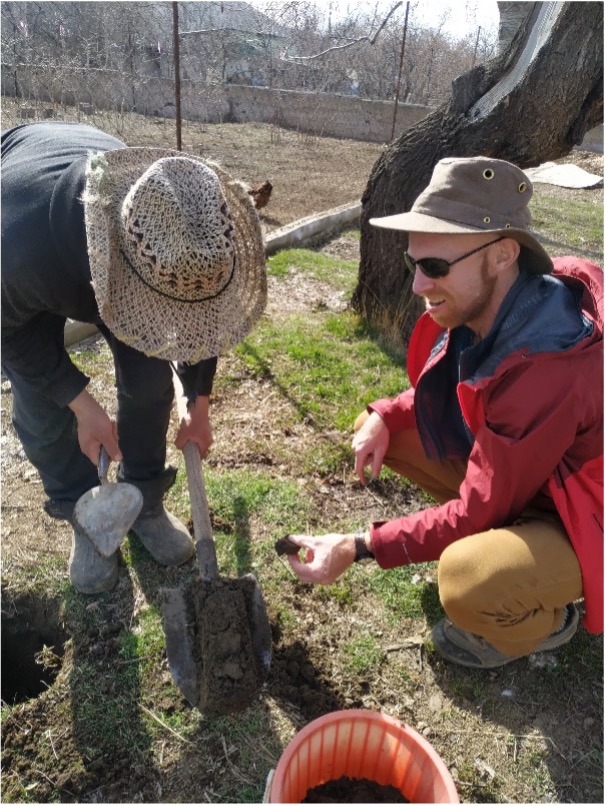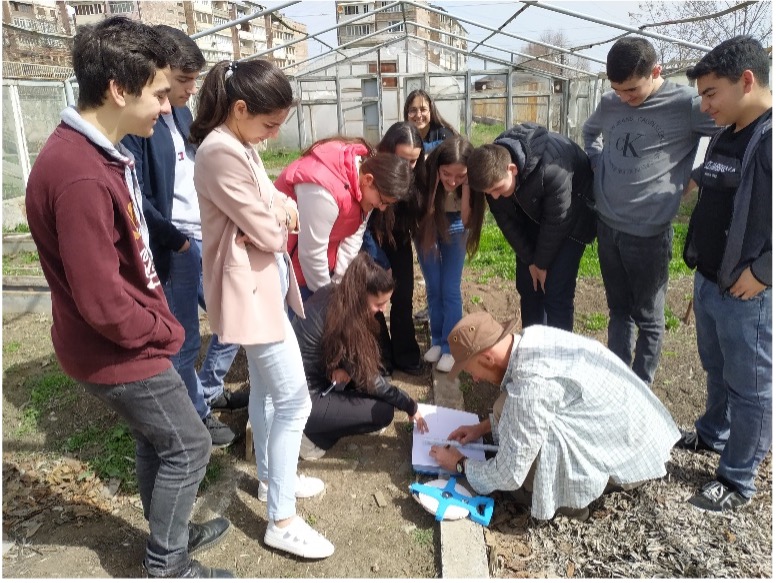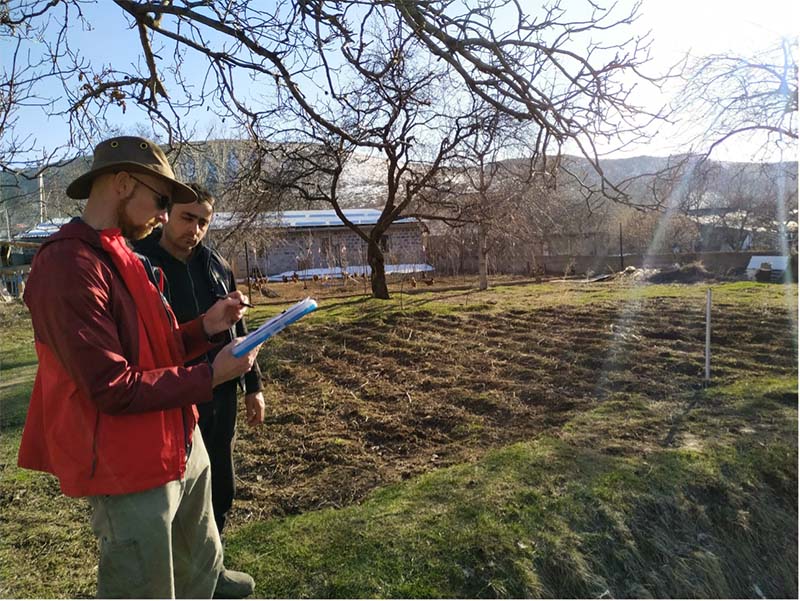During the spring of 2022, Zach had the pleasure of visiting Armenia for the first time through the Partners of the Americas Farmer to Farmer Program. His assignment was to offer recommendations and draw up a full-scale permaculture design for a small, family-owned poultry farm to help make it more profitable and sustainable.
The country’s mountainous and flat-valley terrain is home to five of the world’s major climates and supports many types of agriculture including figs, grapes, and pomegranates. It is also one of the ancestral homelands of wheat and apricots.
Though once lush and heavily forested, climate change is negatively affecting the country’s ability to farm. Desertification is taking hold, degrading soil to sand and making water retention increasingly difficult. Knowing this, his permaculture design recommendations were to focus on farm systems resilient to climate stress.
The Golden Chicken

After an exhausting three-day journey from Hawaiʻi on planes and through airports, Zach arrived in the Armenian capital city of Yerevan. The following day, he traveled an hour east to the rural village of Kamaris where the site of his main assignment, the Golden Chicken, was located. Owned by the Martirosyans family, the Golden Chicken is a smallholder farm that produces eggs and chicken meat, as well as fruit and nuts. The farm was productive but lacked a coherent, integrated design and many plots were left uncultivated. The Martirosyans hoped to implement a new design that would improve the productivity of their land, expand crop varieties, and increase the farm’s profitability. Being well-acquainted with the temperate climate of the region, Zach had a good idea of where to start.
Zach always approaches landscape design from the perspective of a living, synergistic system. During the first few days, he sketched a base map of the area and identified polyculture plantings of trees, shrubs, and groundcovers that would promote the health of the entire agroecosystem—especially the principal fruit trees, plum and apricot. He also took soil samples and analyzed them to assess the existing needs of the soil.
The results allowed Zach to draw up a full-scale design that would provide a number of benefits. He integrated a rainwater harvest system including small ponds that would support microclimates in the fruit orchard. Open spaces would be converted into berry and vegetable gardens. Chicken feed would be grown on site. Beneath the orchard trees, they added wood chips and branches to encourage fungal growth to help the trees stay healthy with less maintenance.
Implementing these changes would provide a fully integrated system for the Martirosyans to improve the health and profitably of the Golden Chicken while cultivating an ecosystem with greater resilience to the stresses of climate change.

Countryside Visits
After parting ways with the Martirosyans, Zach visited numerous rural farms throughout the country, recommending design changes and best practices for soil health. On one visit, he met with a group of enthusiastic high school students who took the initiative of renovating the school-owned greenhouse and making a productive space for education and seed exchange events. Zach instructed their design layout and provided mushroom spawn to get the initial crops off to a good start.
Adapting to Change
Though Armenia is an ancient country, changes in its agriculture-supporting ecosystems are happening rapidly. Permaculture strategies can help farmers more readily adapt to a changing climate while providing a deeper understanding of the interconnected nature of healthy, thriving farm systems. Zach hopes that his assessments and recommendations will help provide a model of sustainability and resilience for small farms throughout the country.

